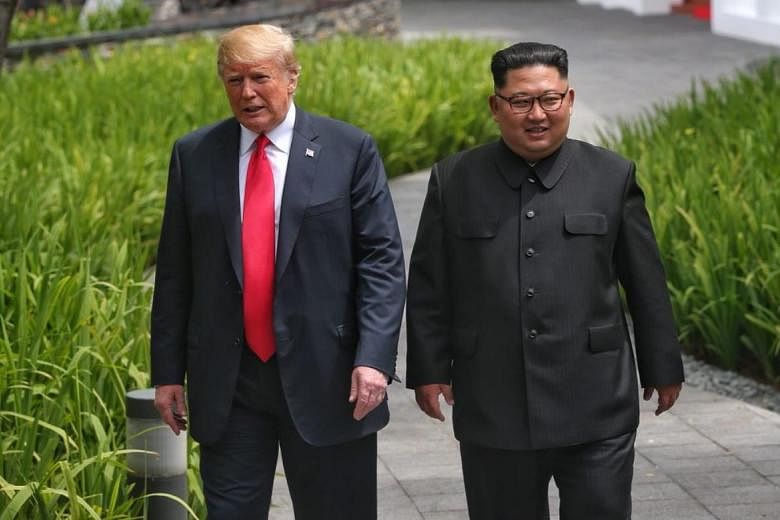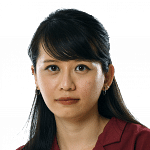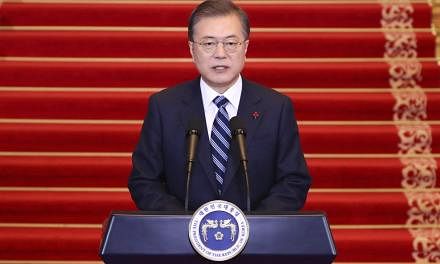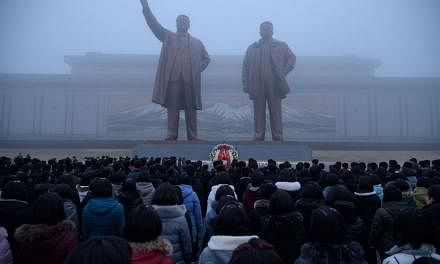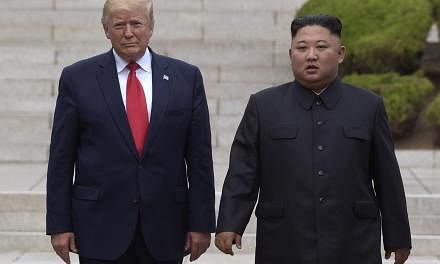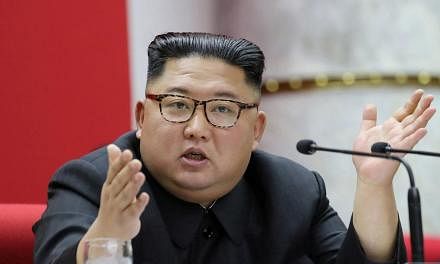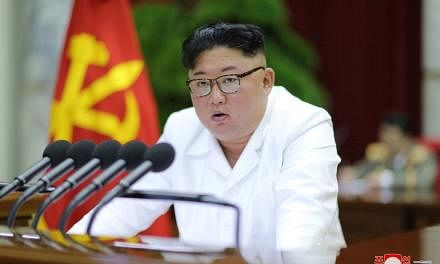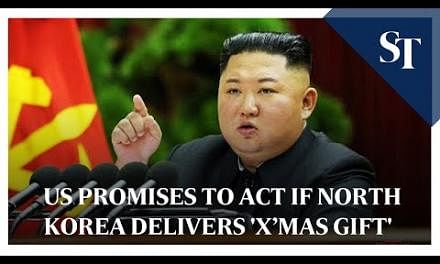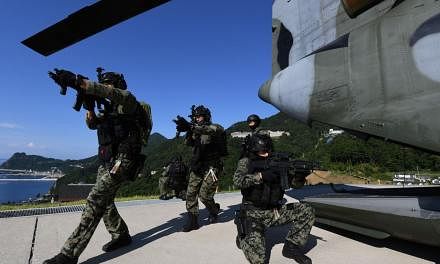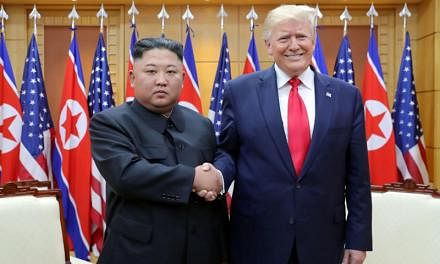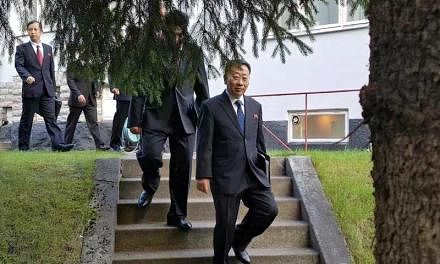SINGAPORE - As the landmark summit between the United States and North Korea kicked off on Tuesday morning (June 12), the first movements of both leaders towards each other projected confidence, though there were also signs of subtle power play.
When the leaders walked towards each other at Sentosa's Capella Singapore hotel's outdoor courtyard, US President Donald Trump was the first to extend his arm to North Korean leader Kim Jong Un, something a host would normally do, said Mr Praveen Nair, a psychologist and senior consultant at Raven Counselling and Consultancy.
This behaviour was later repeated as Mr Trump waited for Mr Kim to enter the library before following, noted Mr Nair. "He could be trying to show that he is in charge even though he is on neutral soil."
Still, Mr Kim - who at 34 is less than half Mr Trump's age at 71 - responded warmly and graciously to these advances, said founder-director of etiquette consultancy Protocol Academy Teo Ser Lee, who also conducts body language training.
Mr Kim also appeared to be making a conscious effort to project a presence as he stood next to Mr Trump, said Mr Nair.
"He stood with his shoulders back, chest puffed out and feet wide apart."
Though there is a height difference of about 20cm between the two men - Mr Trump is said to be 1.9m tall and Mr Kim 1.7m tall, the difference was not as stark in the photos, he added. This could mean that Mr Kim was wearing elevated shoes to minimise this difference.
The first 12-second handshake between the two men was firm and appeared to be one between equals, signalling confidence, professionalism and assertiveness, said Ms Teo.
However, Mr Trump later reached out, palm up, to Mr Kim for a handshake when they sat down. "It was a submissive handshake, which could be because he did not want to show aggression," said Ms Teo.
Both two leaders' bodies also leaned towards each other - an indication that both parties had a genuine interest and sincerity in being present at the summit, observed Mr Nair.
Prior to that, Mr Kim also patted the US President's arm, mimicking Mr Trump's earlier behaviour. Psychological theories have shown that mimicry can establish rapport and likeability, indicating Mr Kim's eagerness to be liked by the other party.
But this could also be an attempt to show control over the encounter, body language expert Karen Leong told Reuters.
Subsequently, Mr Trump flashed a thumbs up to Mr Kim as cameras from the world's media clicked. "It indicates his eagerness for the summit to be perceived as a success," said Mr Nair.
Ahead of 2pm, the two men signed a declaration that will, according to Mr Trump, "take care of a very big and dangerous problem for the rest of the world".

